Gunfire ruled the night, but Joey Cargol slept like a baby. Like the steady sound of white noise, the continuous gunfire lulled him to sleep.
Part 1 of the Joey Cargol series (click here to read Part 1) ended at his campsite inside of Fort Ripley in Crow Point, Minnesota where a military training exercise had commenced that very night.

“The thunderous roar of helicopter rotors will jar the fillings out of your mouth. My tent was lit up as if it was daylight and I didn’t have any trouble finding the zipper, opening the door to what looked like the sun.”
Instantly blinded by the helicopter’s spotlight and realizing he was now completely oblivious to his surroundings, he just went back into the tent and laid down. There wasn’t much he could do. “That light burned my eyes, and no matter how much I rubbed or blinked, all I saw was a big blob. Figured if they didn’t want me there, they’d eventually tell me!”
After a bit the helicopter flew off, darkness took over. Gunfire could still be heard, everything was back as it had been except his vision. Within a few minutes, a military vehicle pulled up and the sound of soldiers yelling for him was easily discernible.
“Barely able to see them or make out what they were saying, I knew they meant I shouldn’t be there. Realizing that the terrain prevented them from reaching me without great difficulty, I hollered back that I was just passing through and didn’t want to be there either. Not sure if they heard me or if it was too difficult to remove me, they simply gave up and drove off. The battle raged through the night and into the next day. At first light I figured it best to hightail it out of there and that is exactly what I did.”

The biggest challenge on the upper river wasn’t the water, but rather wind and rock. The river cuts a channel through mud and stone, caving trees and building steep riverbanks. Large shallow mud flats with hidden rocks are sometimes stretched across the channel. Paddlers attempt to stay in the deepest channel with the most current to avoid dangers and make the most speed. The Minnesota wind, stronger than the current, blew through open areas where the river was deepest. Forced to paddle through the shallow flats to avoid the wind, he sacrificed speed and risked danger. He pushed through non-stop 30kt winds for 16-1/2 hours, portaged two dams to cover 33 miles. Mentally it was tough, physically it was obliterating.
“I know God has a plan for each of us and I try to be ready. I felt that the string of bad luck, low water, high winds, damaged canoe, etc. was to prepare me for the long voyage ahead,” Cargol said.
The weather turned fierce with hail, wind and heavy rain in the forecast, called for a rest day. No reason to fight all day for little to no gain. Cameron Jacobson and Kelly Kampa joined him the next day on for a 10-mile stretch and helped him portage the Sartell Dam. He attempted to portage one of the worst rapids on the river, Sauk Rapids, but with construction on the bank was forced to run the rapids. He made it through but flipped over at the very bottom of the rapid, soaking his phone and wallet.

He reached Anoka, Minnesota on Father’s Day weekend with the pleasure boats out in full force. Their wakes zapped his speed, slowed him down to a crawl. “The people were very friendly though and a couple even ordered me a pizza and had it delivered to the dock!”
A stranger helped him portage the Coon Rapids Dam and was lucky enough to get more help with the St. Anthony Falls Dam. From there on out the dams are built with a locking system that allows boats to travel through them. “I was excited to go through my first lock and upon doing so I came out inside the beautiful Hidden Falls Regional Park. It was amazing, and even when the sky turned black and it began to rain and hail, I was struck with its beauty.”
“I’d gone through Minnesota like a herd of turtles, fitting since I’d seen a million of them. It was time for snapping turtles to lay their eggs, every sandy bank was covered with them. I came across a train bridge in Hastings, Minnesota that said “Milwaukee Road” and knew that a new state couldn’t be that far away. When I made the turn into Wisconsin, I heard whistling and cheers from the balconies and saw people waving signs. I was surprised and embarrassed to know the cheers were for me. I didn’t realize anyone cared that much.”

From there on out, the Mississippi River is the border of many states, but is not in one state alone until Louisiana. With Minnesota on his right and Wisconsin now on his left, he reached Red Wing, Minnesota on June 24. “It is the quintessential All-American small town. Everything revolves around the shoe company that shares its name. It’s great to see an American company supporting the town that supports it. Made in the USA is strong there!”
Entering Lake Pepin the wind shifted to his back and for the first time and what turned out to be the last time, he rigged up his sail and reaped the benefits. Late in the afternoon, though, that tailwind turned into a storm chasing him down over a very dangerous and choppy lake. He ducked into quaint Lake City for safe harbor where a River Angel offered him a bed, shower and hot meal.
“River Angels are an unofficial group of good Samaritans up and down the river always ready to offer supplies, shelter, food or medicine like the much needed antibiotic ointment I was given in Palisades. Some say the river can’t be done without the support and love shown by the River Angels and I would certainly agree.”
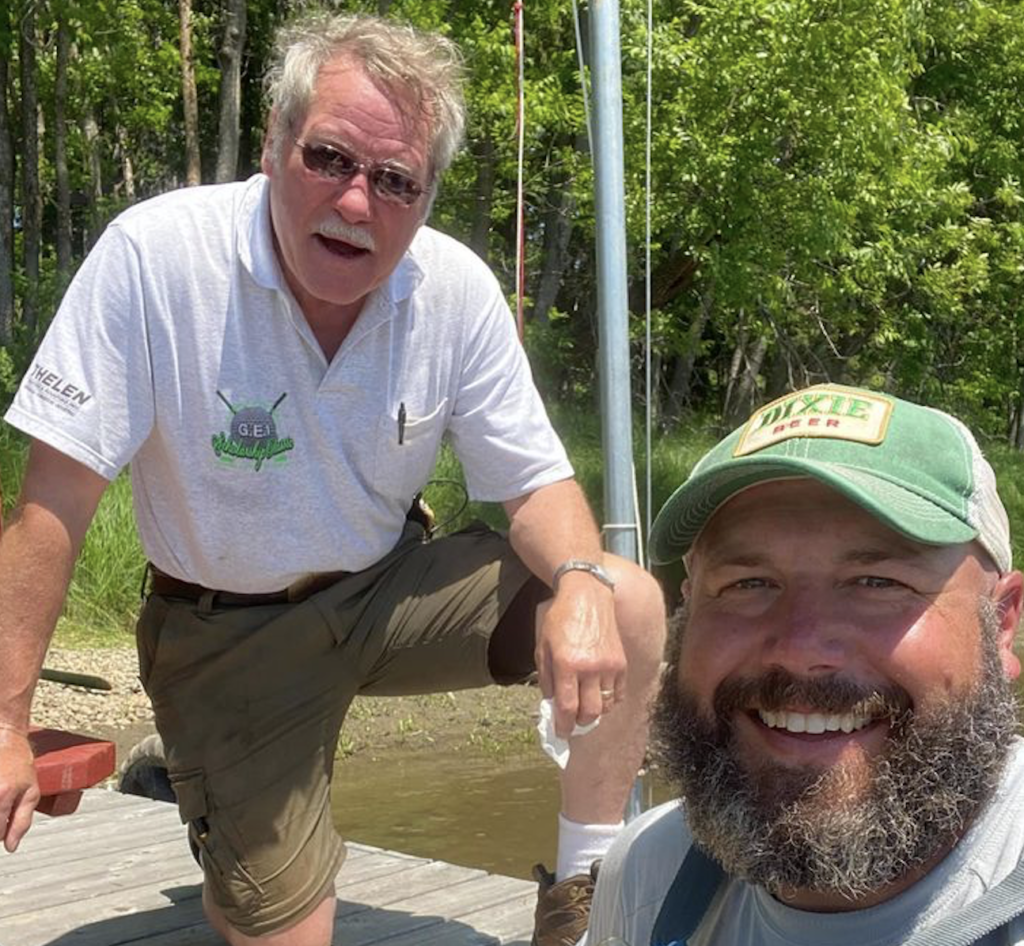

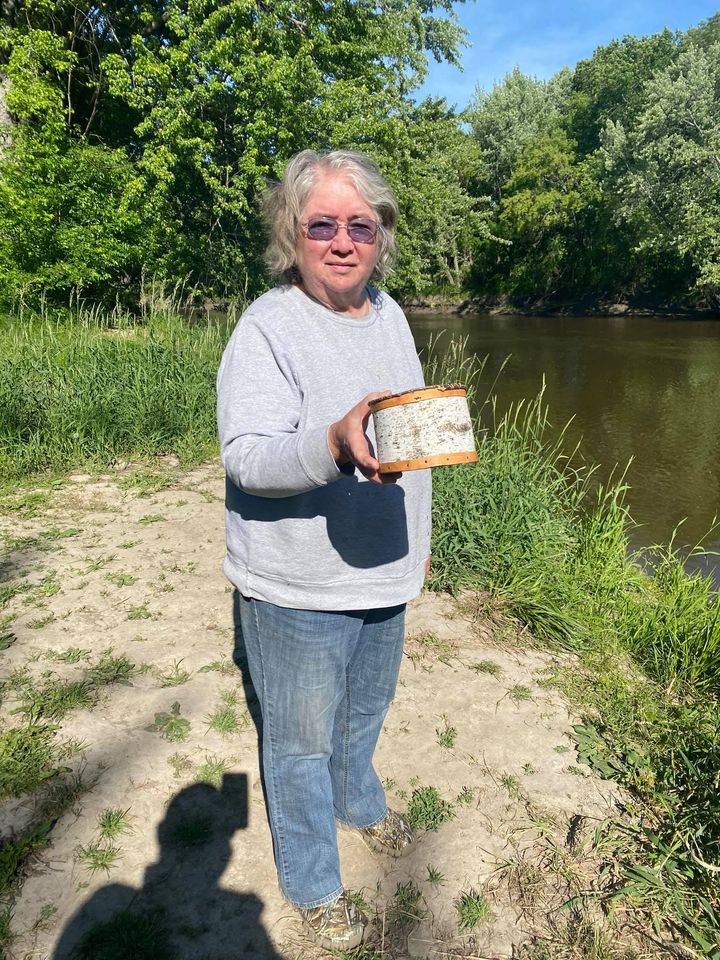
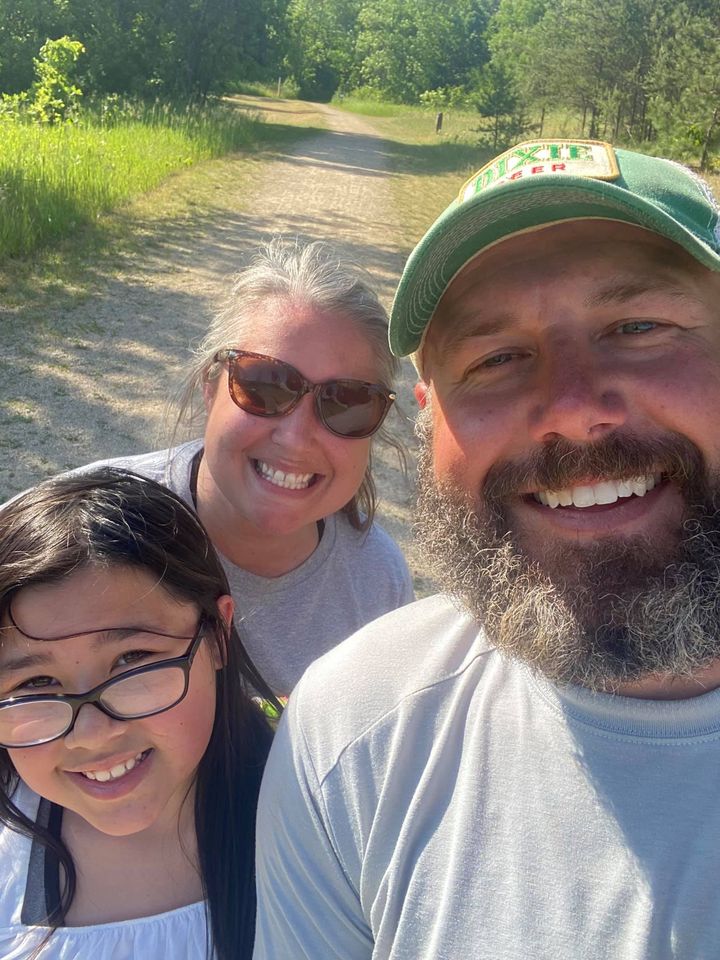
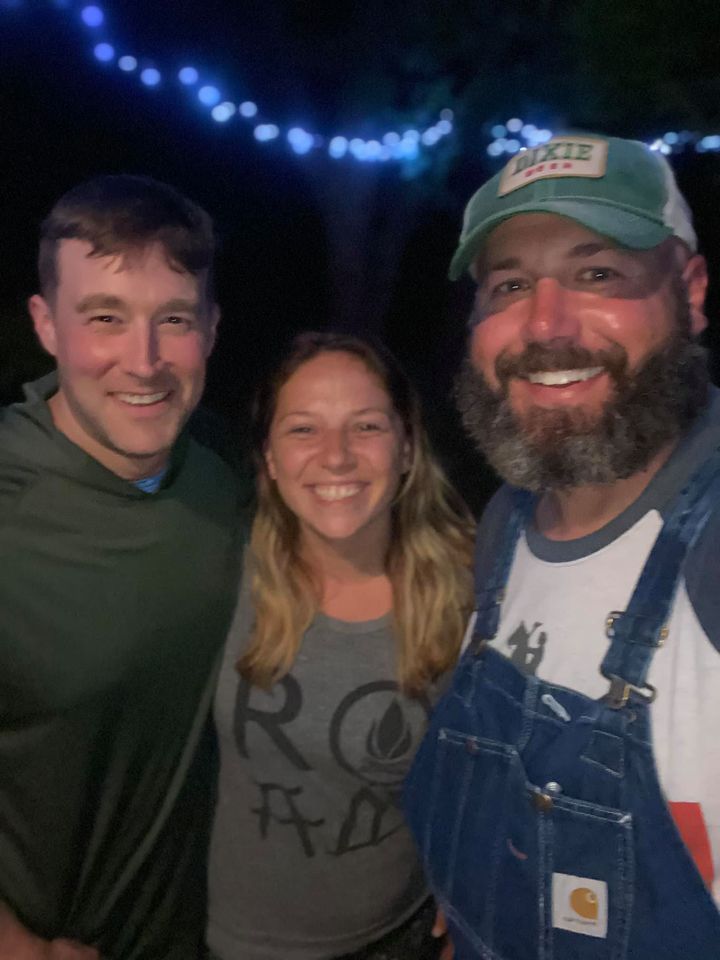
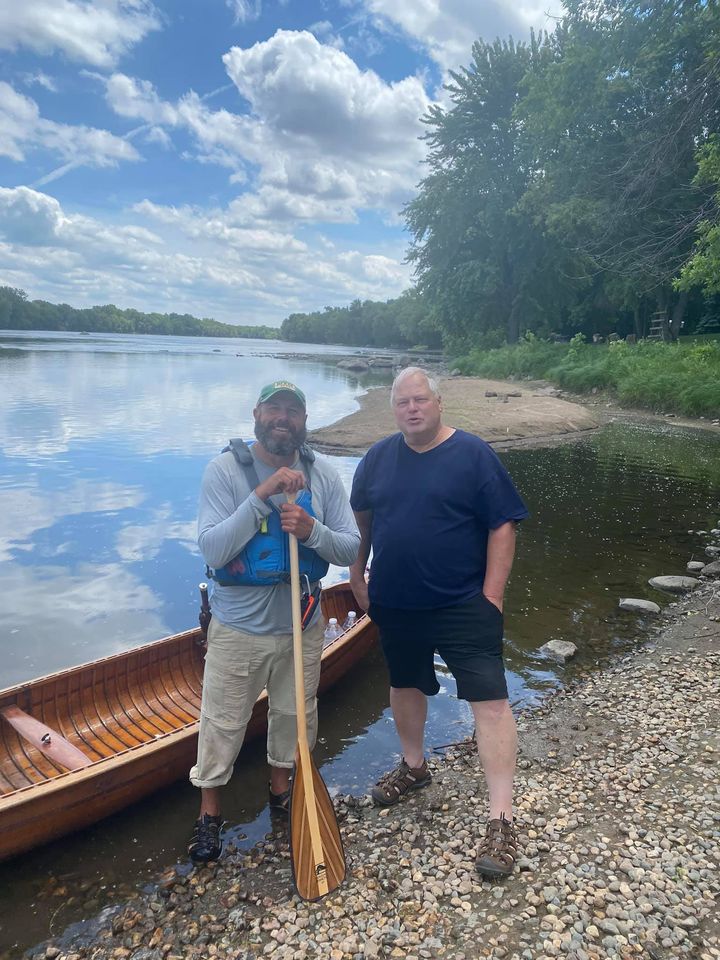



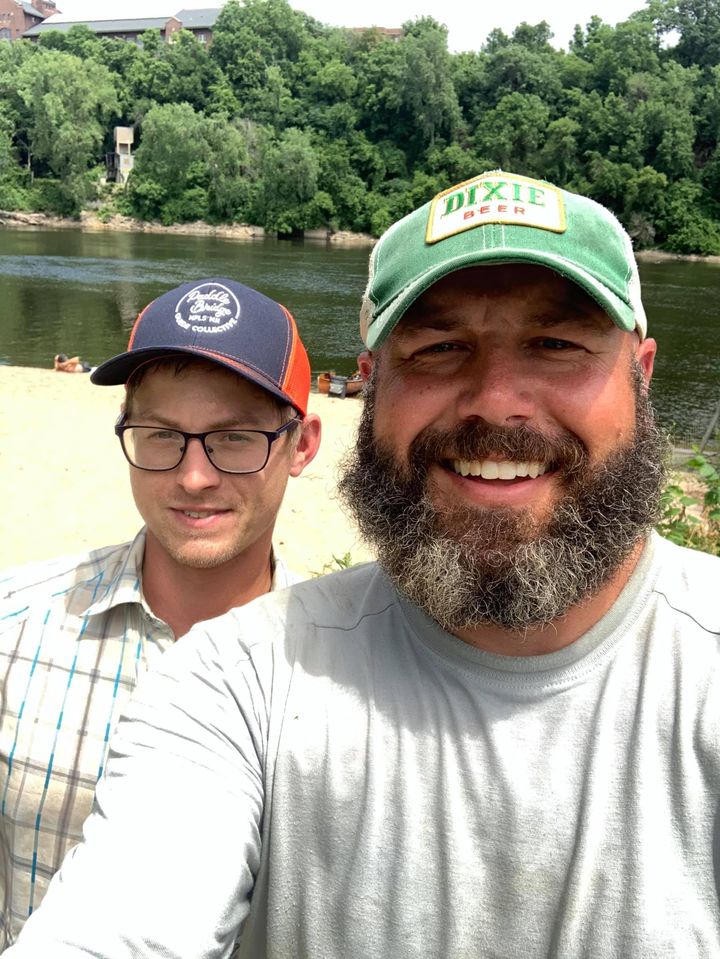



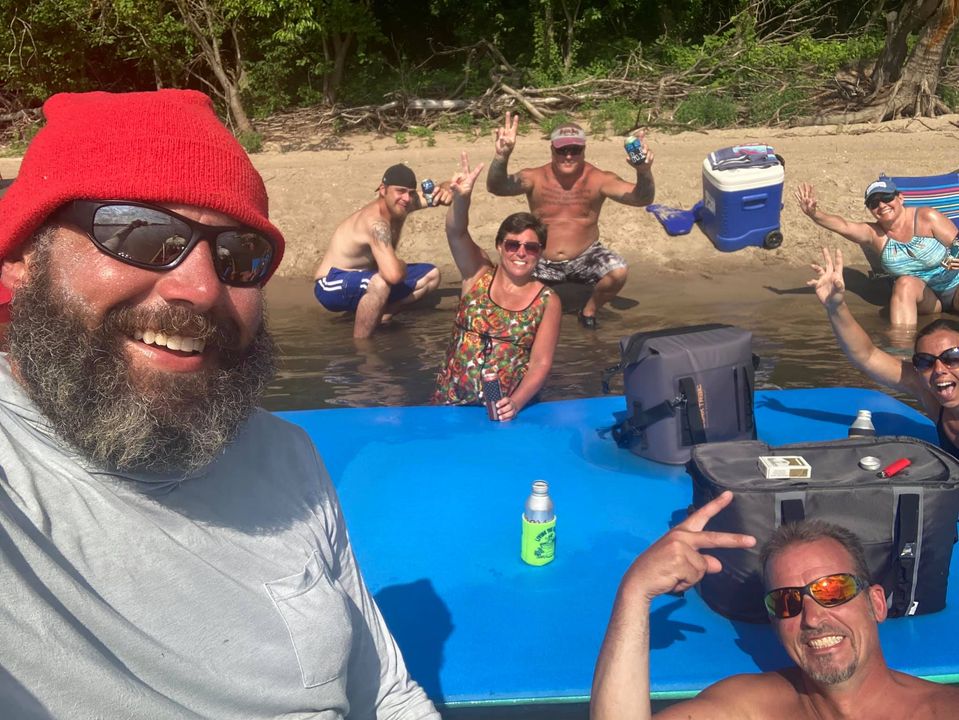

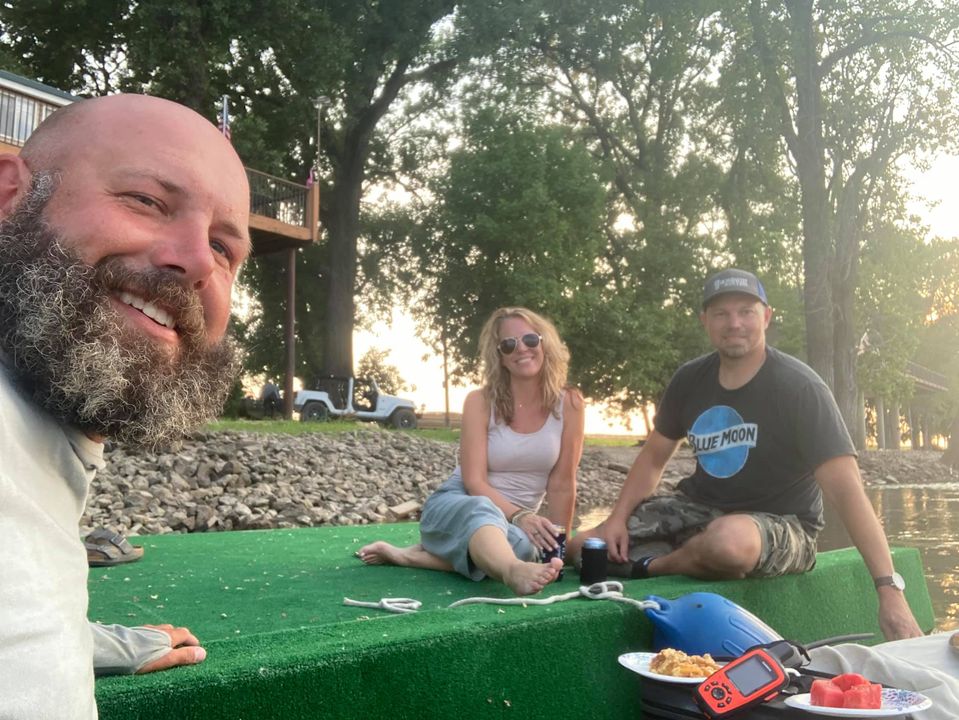


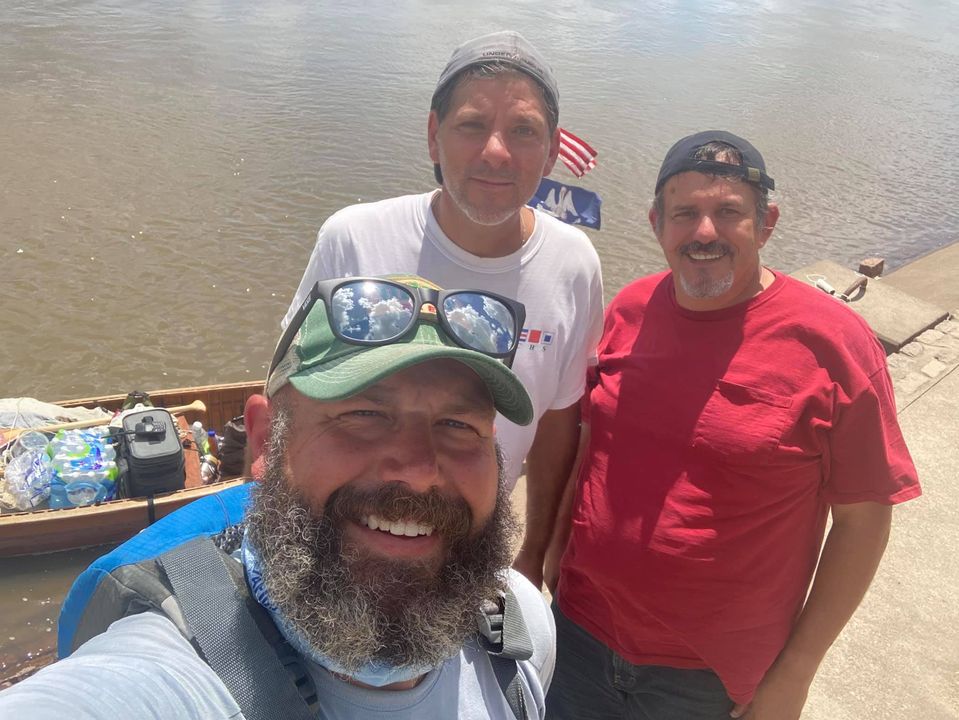
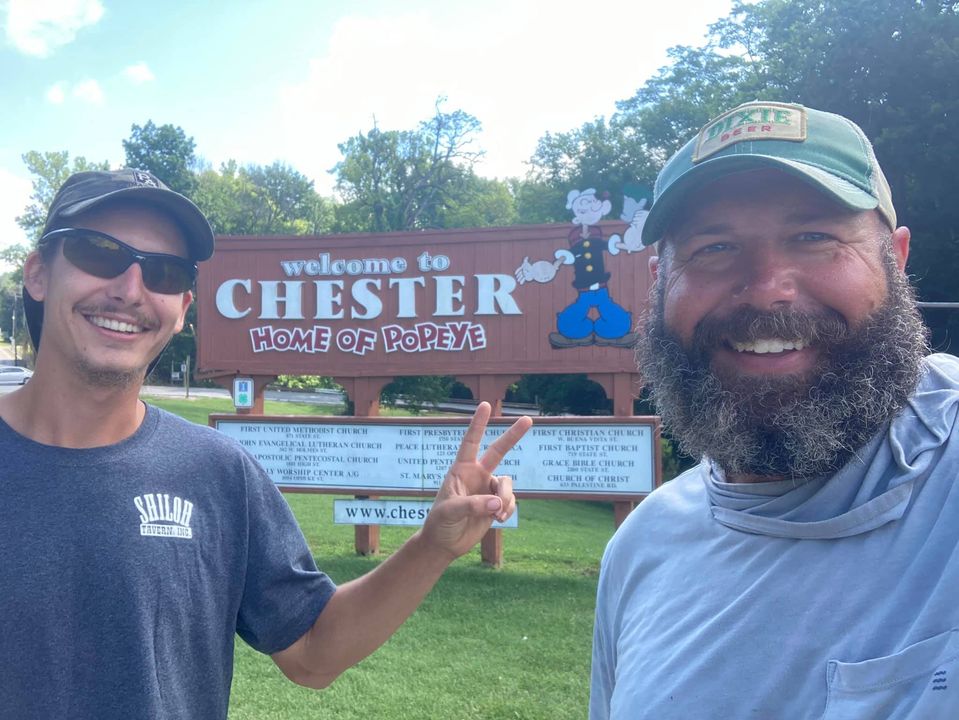
As the last few miles of Minnesota slipped away and Iowa appeared on the horizon, he was excited for what lay ahead. He had met so many new people, seen and learned new things, had so many new experiences.
“As I reached La Crosse, Wisconsin, I was so glad I hadn’t quit.” South of La Crosse, the weather was rough and the bass boats were plenty. The Bass Fishing World Championship for high schools was being held with literally hundreds of boats shooting in every direction. I ducked out of the weather one day to the Lawrence Lake Marina and ran into a high school team from Benton, Louisiana doing the same. Despite some fog the next day, the weather laid down for good mileage. At Prairie du Chien, Wisconsin, the pleasure boats beat me up badly.

“In Guttenberg, Iowa I met some extended family for the first time. My Grandmother and Grandfather met in the Navy in WWII, she a nurse, he a metalsmith. If it hadn’t been for the war, an Iowa farm girl and a South Louisiana coonass wouldn’t have met and I wouldn’t be here! I finally got to meet my incredible “Yankee” cousins and grew to love them so much, so fast!”
Guttenberg is another river gem where he had a tour of the city and Chief of Police George Morteo treated him to dinner.
He left Wisconsin on the last day of June, with Illinois on his left and Iowa on his right. Wisconsin didn’t seem to want to let him go as the wind drove him back upriver all day. He stayed in Bellevue, Iowa that night at the oldest Bed and Breakfast in the state, the Mont Rest Inn. “I so needed to take a shower, but I was so exhausted and the tub looked so inviting, I took my first real bathtub bath in years.”
He started July rested, clean and fed, but the weather didn’t keep that streak going. After struggling all day, a trapper showed him a 10’ wide slough through the islands protected from the wind. On July 3 he met a remarkable river oddity, Ken Purdy, a 77 year-old water-skier and race boat driver with an unmatched zest for life. Cargol spent the night with Ken and his friends eating and watching fireworks, celebrating his Independence Day a day early. He camped in a remote area far from any celebrations the holiday night.

The locks, at first a gift allowing him to not have to portage began to show themselves as a detriment. Tow traffic was backing up and traffic jams were forming as boats waited to get through. Delays went from lasting a few minutes, to untold hours. The locks were much larger and the volumes of water they moved much greater, allowing for tows to push even more barges. As he left the huge lock in Keokuk, Iowa, he found for the first time real current that pushed him quickly down river. Within a few minutes Iowa was in the rearview and Missouri and Illinois were his domain.
He set up his tent that night below an old brewery on the Warsaw, Illinois side of the river. The brewery is now a restaurant so after a great meal he dozed off in his tent. Around midnight while fast asleep, a line tow sent a series of towering waves into his canoe tied up on the bank of the river.

“Galoosh, Galoosh, Galoosh will reverberate in my head for the rest of my life. So unnerved by the sound, I jumped up and opened the door to my tent. In the moonlight I saw a raging frothy river, but no canoe. Then I saw the mast sticking out the water and bags floating down the river. My tent was set up about 30’ up a steep bank and I sprang to my feet completely in the buff, ran down the bank and jumped straight into the river. In the darkness I grabbed for every piece of gear I could. I threw everything on the bank and continued till there was nothing left to grab but the canoe. I pulled it up on the bank and rolled it over, water gushing out everywhere! By now the adrenaline had worn off and I was left standing on the riverbank soaked, covered in mud and completely exhausted. I walked back to my tent and went to bed just like that. There was nothing else I could do in the dark.
“I awoke to a mess of gear everywhere, packed everything up taking note of everything lost. The biggest issue was canoe damage. The water pouring in and sinking her had cracked virtually every rib to some extent. I found she was still seaworthy, but I had to make some hard decisions.”
He passed through Hannibal, Missouri, the boyhood home of Samuel Clemens, aka Mark Twain, one of the most preserved river towns on the Mississippi. Full of history, it harkens back to a different time. He pressed on from there in blistering heat and reached Louisiana! Well Louisiana, Missouri that is.

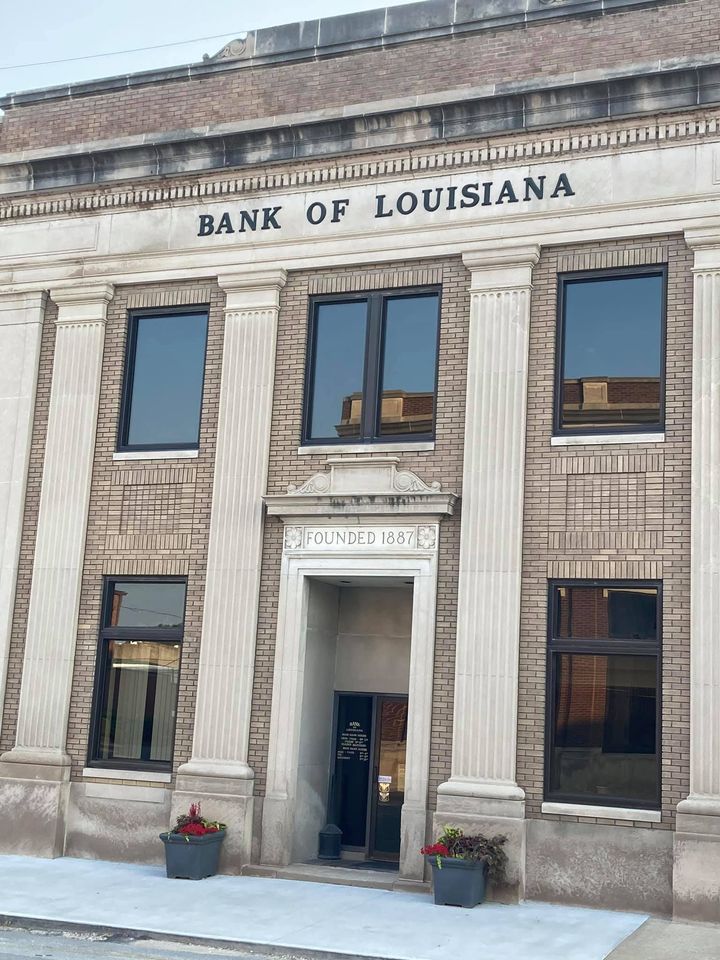
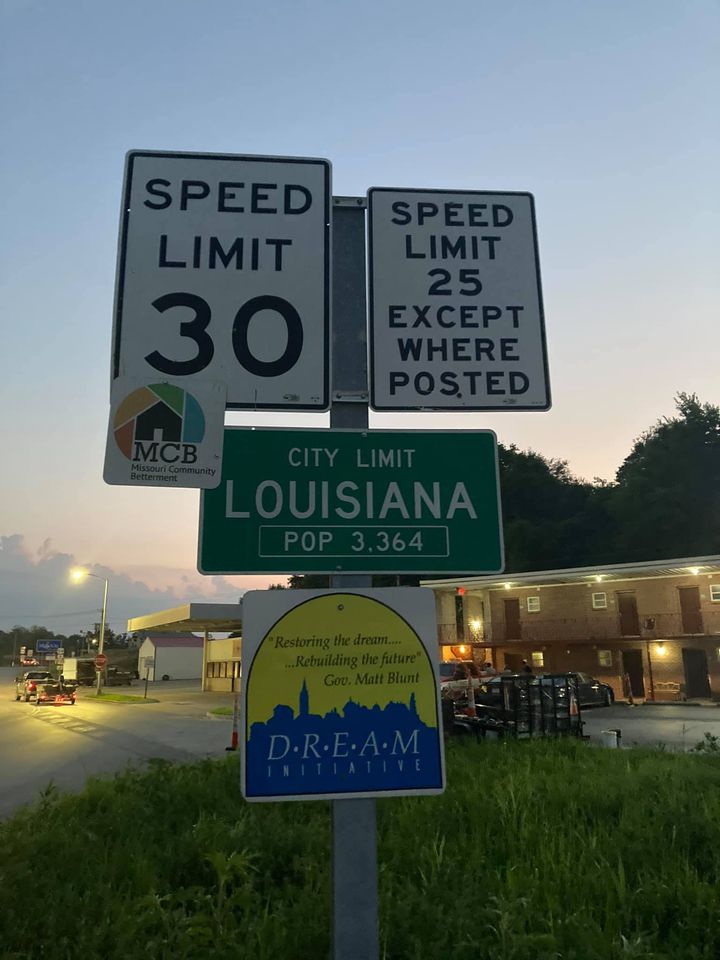

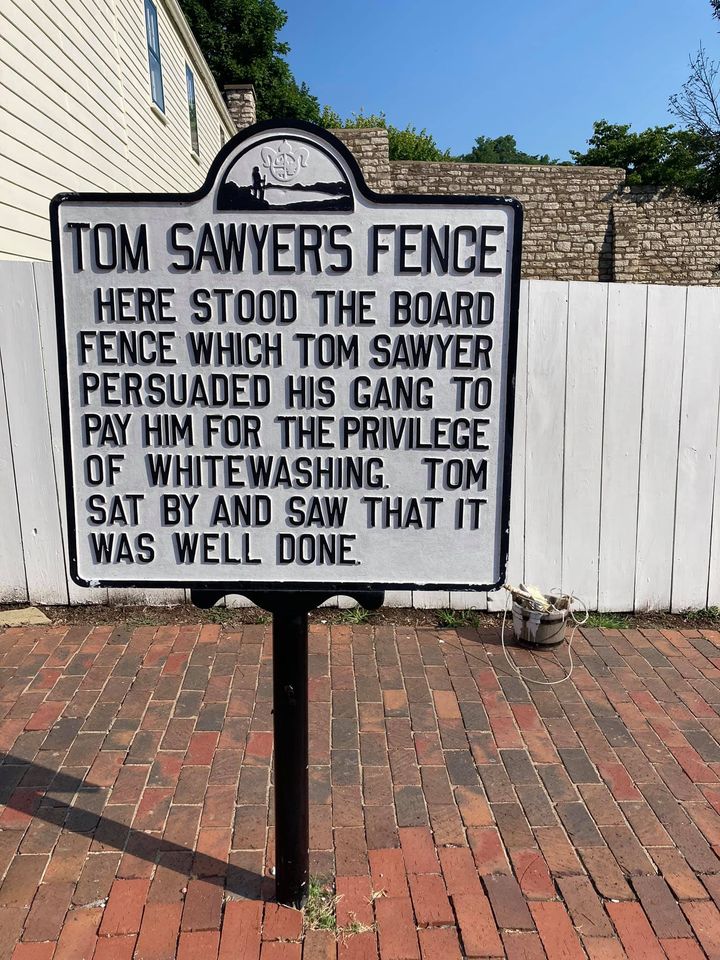
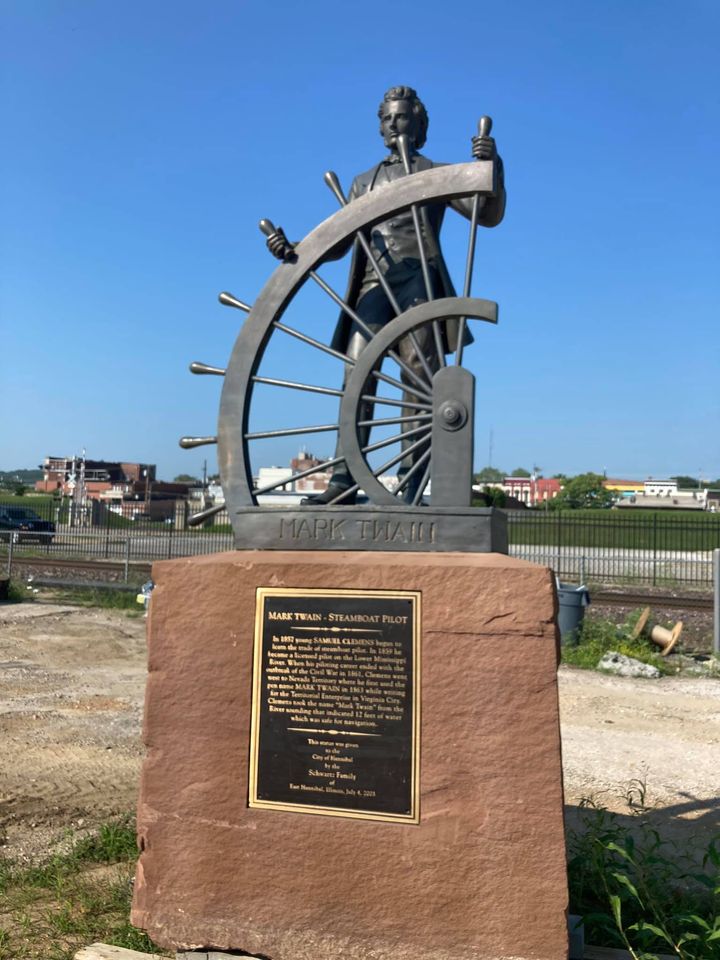


“With the passing tows’ swells getting bigger, my canoe needed to be lighter so I mailed more gear home. I met some great people in Louisiana, not quite home, but very nice none the less,” he said.
His VHF radio, submerged when his canoe sunk in Warsaw by then had stopped working. He had one sent to Polestar Marina in St. Charles, Missouri to pick up as he passed by.

With the level of damage to his canoe, Cargol opted to not run the Chain of Rocks and instead pass through the last two locks on the Mississippi River. River traffic was so backed up that it took virtually all day to get through, the sun setting as he got out.
“There really wasn’t a good, safe place to camp or any option of a place to go. Took the only option, hid in plain sight, camped right under the Gateway Arch in downtown St. Louis. That night presented a “unique experience” of urban camping. Twice I was awaken by miscreants, but only once did I have to get out of the tent. The sight of a half-naked ogre with all the accoutrements of battle at his ready scared them off.”
South of Sainte Genevieve on July 13, he set a personal record to that point of 60 miles. Too dark to pick a good campsite, he was forced to camp in a sloppy pigsty. The next day he reached Chester, Illinois, the home of Elzie Segar who created the Popeye the Sailor Man cartoon characters. He actually drew them in the likeness of a Chester resident at the time. Each building the respective person lived or worked in has a statue of his character out front.

“With temps getting hotter, I was focused on paddling and dealing with traffic when I found myself between two 15-barge tows. Although used to being between tows and dealing with traffic, we were all coming down on a bend in the river and they were both in the process of overtaking me. It was a little more stressful than usual, but then the bottom fell out, literally and I had to do my best to keep from panicking!
“The water was calm as glass when a boil came bubbling up from below like a sea monster belching hot water from the depths. Its width slowly expanded till it was a good 30’ in diameter. As I approached it, I couldn’t believe how big and how fast it grew. My admiration for this phenomenon quickly changed to that of dire fear!
On the edge of the boil a whirlpool spun off no bigger than a yardstick, but like in a flash, it grew to at least 6’ wide and about 4’ deep, sucking water from an area about 25’ around. It was sucking me in and though I paddled like a scalded cat, I was being sucked straight towards it!
*All photo’s credit of Joey Cargol
###
Part 3 of Joey Cargol’s story will come out Wednesday, September 2 at 9am.
Looking for part 1 of Joey Cargol’s story? Click here.


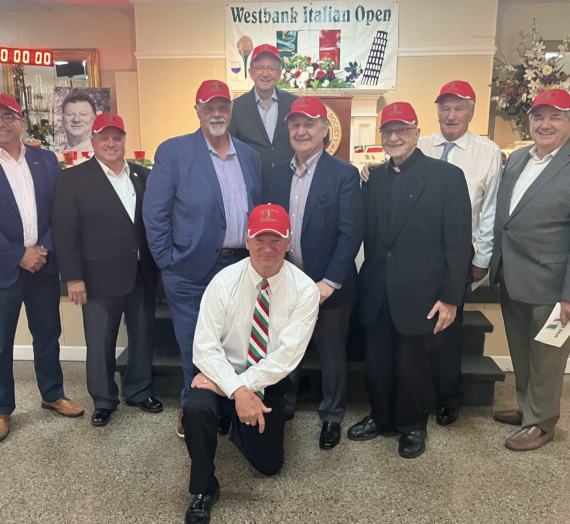
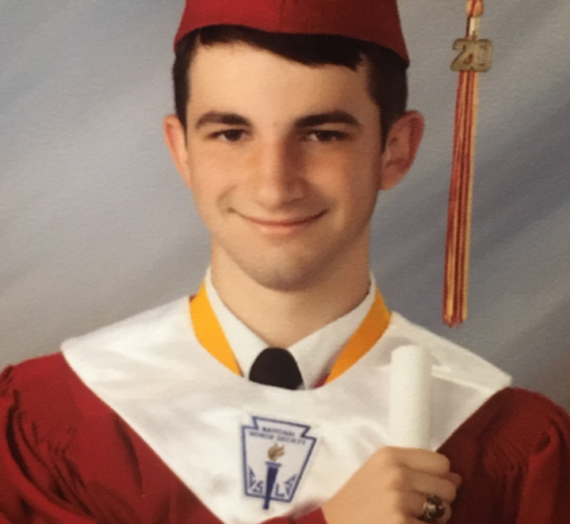
WENDY BEAUMONT
WHOA
(Mary) Helen Williams
We think so too, you won’t believe what happens in the next story! Part 3 comes out Wednesday, 9/2!
Tim Kass
Great story I’m a fleet boat captain in New Orleans with Marquete Transportaion at Wego Grain elevator on the St Therese.
(Mary) Helen Williams
How cool Tim, thank you for reading along! The next part of the story comes out this Wednesday, 9/2 we hope you’ll read it!